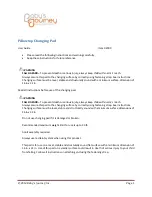
3.6
Function
Transmit / Receive
The transmitter transforms the electric signals into light signals by means of an IR-
LED. The receiver transforms the light signals back into electric signals by means
of a photodiode.
Carrier frequency
To ensure that there is no mutual interaction during data transmission in full-duplex
operation, two different pairs of frequencies are used. These are identified by type
designations ... .1 ... and ... .2 ... .
Fig. 2: Transmit - receive principle
FSK modulation
Each device transmits its signal by means of frequency shift keying (FSK modula-
tion). Information is bit-encoded in two frequencies.
Fig. 3: FSK modulation
The receiver filters the frequencies from the received signal and transforms them
back into bit sequence. Bit errors in the transmission, caused for example by light
flashes from fluorescent tubes, are filtered out in this way.
Transmission quality
The level of the received signals can be checked on both devices.
·
Remote multifunction LED:
Multifunction display (red, red blinking or yellow) for coarse tuning.
·
Close-up multifunction display:
Bar graph for reception level (10 LEDs) for fine-tuning.
·
For PLC:
Data transmission good - terminal 9
Data transmission critical - terminal 8
Monitoring
To monitor the aligned DDLS 170 or for contamination checks, connect both output
terminal 9 and terminal 8 to a PLC program.
DDLS 170/xxx.2-xxxx
DDLS 170/xxx.1-xxxx
"0"
"1"
Leuze electronic
DDLS 170
11














































